On the surface, Australia’s job market looks incredibly strong.
According to the latest labour market survey from the Australian Bureau of Statistics (ABS), the economy recorded 3.5% annual job growth in January.
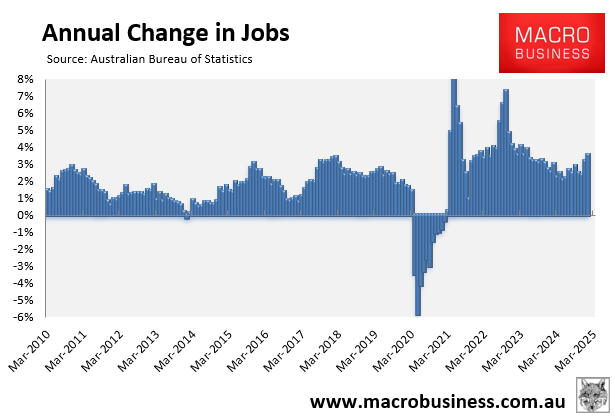
Australia’s official unemployment rate (4.1%) is also amongst the lowest in the advanced world, alongside the United States.
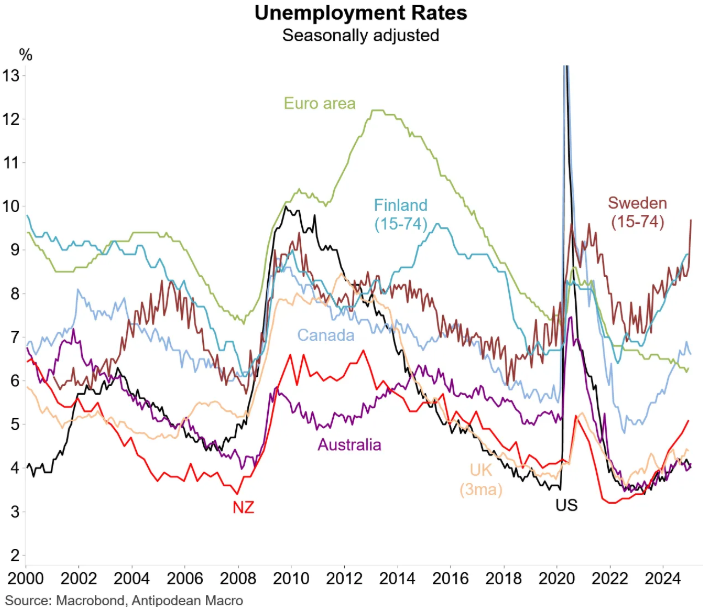
The latest Statement of Monetary Policy (SoMP) from the Reserve Bank of Australia (RBA) revealed the main reason for Australia’s strong labour market.
As illustrated in the following chart, over half of overall employment growth over the year to the September quarter of 2024 was attributed to health care.
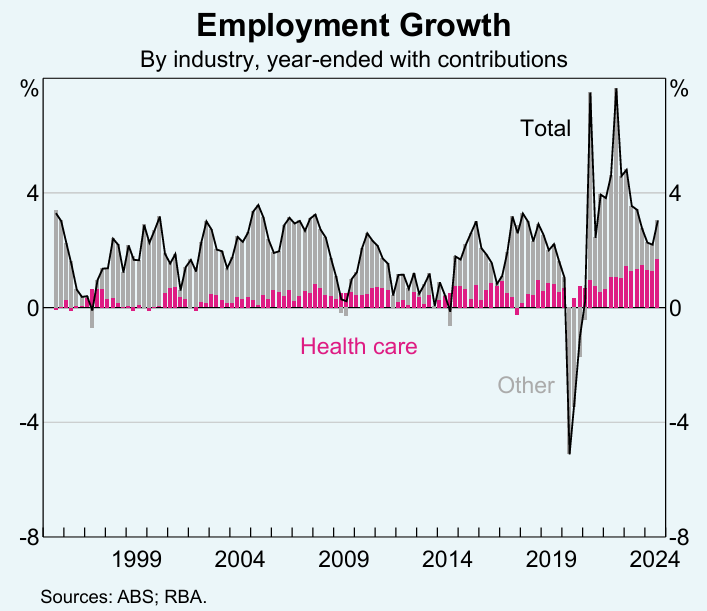
Australia’s health care employment over recent years has also grown well ahead of other advanced nations, as illustrated below.
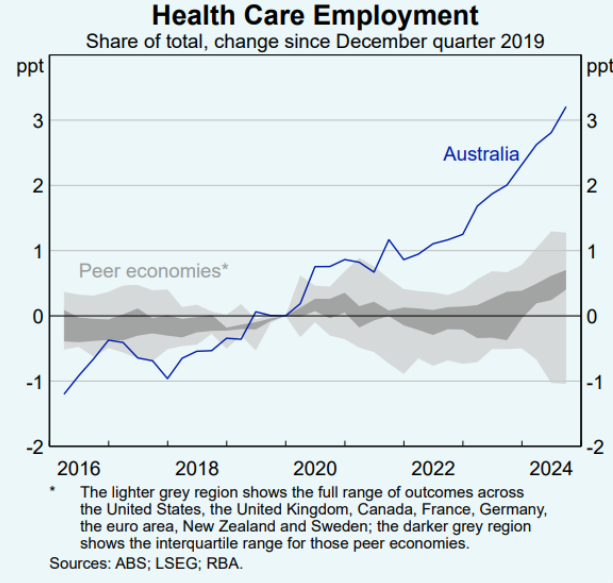
Strong demand for labour in the health care industry has drawn in workers from other industries, as well as some who were not previously employed.
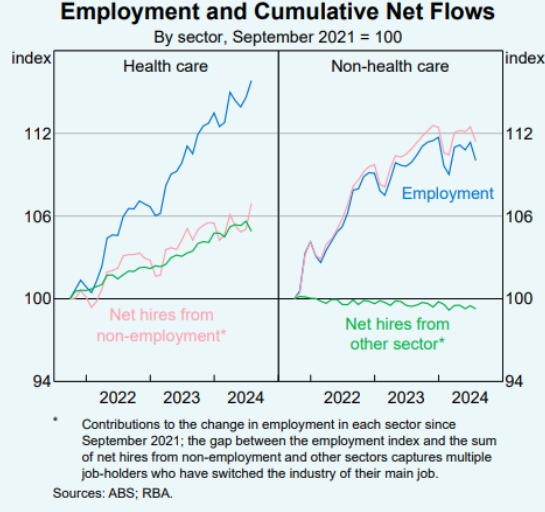
These workers have tended to come from the administrative services and household services industries, including hospitality, arts and recreation, and education.
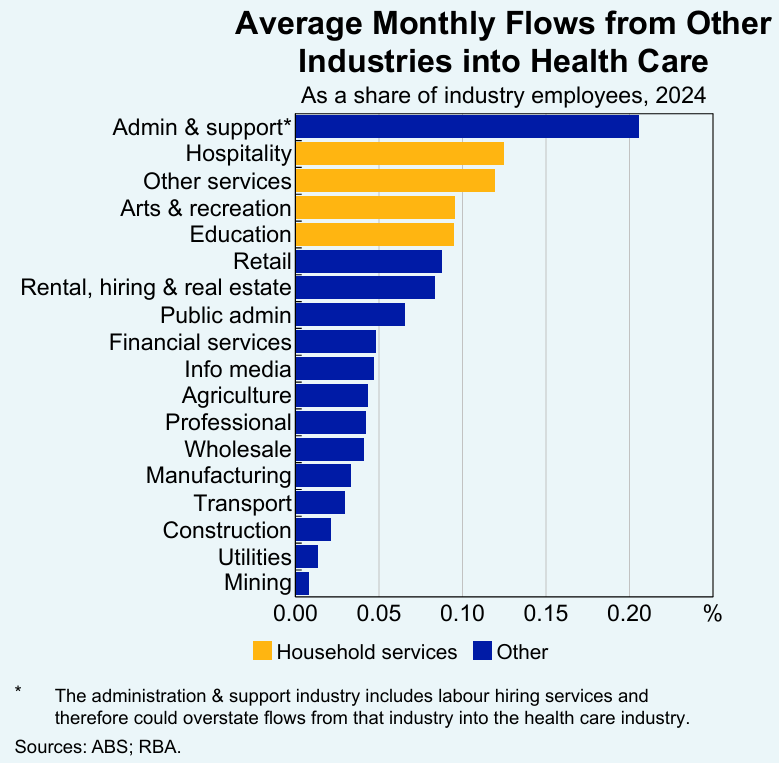
The main driver of the explosion in health care jobs is the rollout of the National Disability Insurance Scheme (NDIS), which has seen explosive growth in carer jobs.
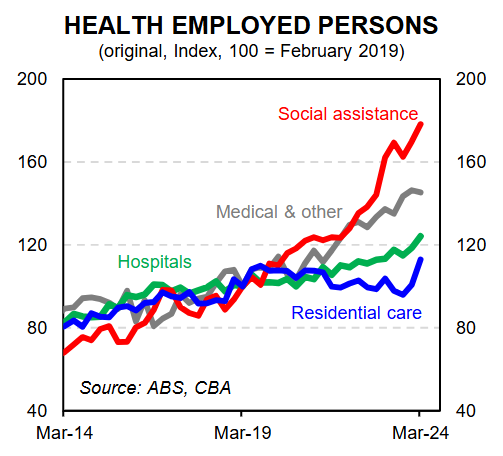
By contrast, job growth in the market (private) sector of the economy has been incredibly weak.
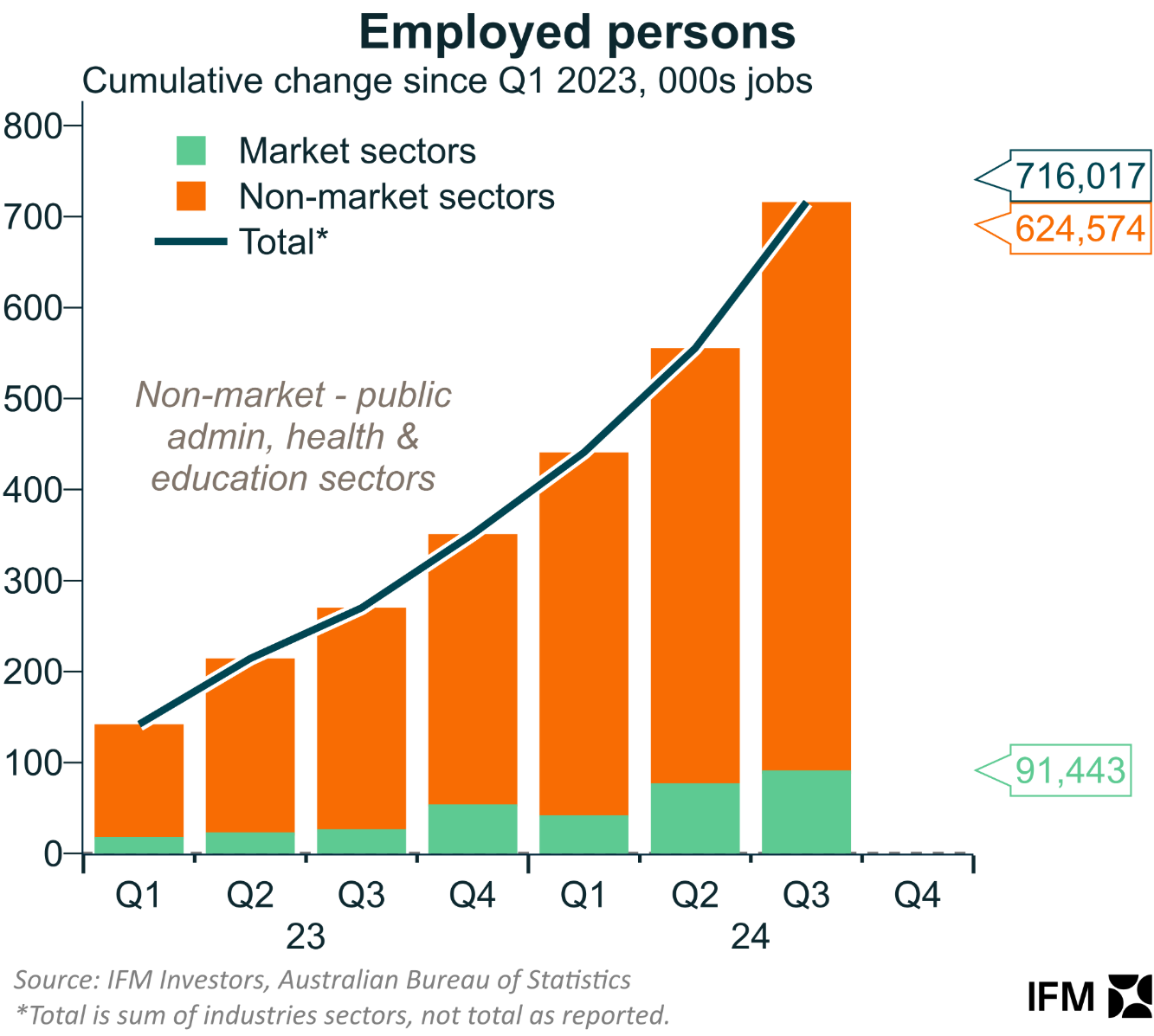
According to Alex Joiner from IFM Investors, between Q1 2023 and Q3 2024, employment in the market sector grew by only 91,443, versus growth of 624,574 across the non-market sector.
This means that 87% of Australia’s job growth in the seven quarters to Q3 2024 was government subsidised in the non-market sector.
Even worse, Andrew Boak at Goldman estimates that 40% of the health care jobs are not new and are a reclassification of pre-existing work from informal to formal.
This is why Australian Industry Group CEO Innes Willox recently claimed the private sector was experiencing “recession-like conditions”.
“The data shows much of the private sector faces recession-like conditions. It is only a flood of government spending in recent months that is masking the true picture in the broader economy”, he said.
“It is clear the non-government sector of the economy, the private sector, is in contraction and you could then argue it is in recession”.
“There is a big transfer between the private sector and the public sector at the moment”.
“The private sector is shedding jobs to the public sector, which is picking up jobs. But are they the productive jobs we want?”.
“The real problem we have here for the economy is that the private sector, which is the engine room of the economy, is slowing quite dramatically”, Willox said.
The reality is that Australia’s labour market has a soft underbelly and is heavily reliant on government spending.

